
Music Monday's originated at The Tattooed Book Geek's fantastic blog and has shown up hither, thither, and yon since then.
(sadly, for me, the “someday” in the chorus is…today)b
![]()


Music Monday's originated at The Tattooed Book Geek's fantastic blog and has shown up hither, thither, and yon since then.
(sadly, for me, the “someday” in the chorus is…today)b
![]()
 Pictures by J.R.R. Tolkien
Pictures by J.R.R. TolkienDETAILS: Publisher: William Morrow & Company Publication Date: November 16, 2021 Format: Hardcover Length: 104 pgs. Read Date: September 21, 2024

Last Spring, I read Lashaan Balasingam talk about this book at Roars and Echoes and put it on a wish list instantly. I was given a copy of it last year, but aside from glancing through it then, I hadn’t taken the time to really sit down with it. But with Hobbit Day yesterday, I made time Saturday to do just that—so I could post about it today (and maybe add this and some other things to a recurring thing like I do with Towel Day).
You should really see what Lashaan had to say about it, not only does he do a (typically) better job of it than I’m about to, but he liked it a lot more than I did.
Well, it’s pictures drawn by Tolkein in his spare time—when he wasn’t teaching, creating new languages, writing epic fantasies, or smoking his pipe (well, he probably did both of those at the same time).
The Publisher describes it this way:
With Christopher Tolkien as your guide, take a tour through this colorful gallery of enchanting art by J.R.R. Tolkien, as published originally in the first groundbreaking Tolkien Calendars of the 1970s.
This collection of pictures, with a text by Christopher Tolkien, now reissued after almost thirty years, confirms J.R.R. Tolkien’s considerable talent as an artist. It provides fascinating insight into his visual conception of many of the places and events familiar to readers of The Hobbit, The Lord of the Rings, and The Silmarillion.
Examples of his art range from delicate watercolors depicting Rivendell, the Forest of Lothlorien, Smaug, and Old Man Willow, to drawings and sketches of Moria Gate and Minas Tirith. Together they form a comprehensive collection of Tolkien’s own illustrations for his most popular books.
Also included are many of his beautiful designs showing patterns of flowers and trees, friezes, tapestries, and heraldic devices associated with the world of Middle-earth. In their variety and scope, they provide abundant visual evidence of the richness of his imagination.
This enchanting gallery was personally selected by Christopher Tolkien who, through detailed notes on the sources for each picture, provides unique insight into the artistic vision of his father, J.R.R. Tolkien.
Well, it’s pretty bland. It’s just straightforward descriptions of the pictures, where it came from, where it was originally published—who added color (sometimes), and so on.
It’s not bad, it’s not good—it’s just there. And that’s good enough, this isn’t supposed to be about Christopher Tolkien’s wordsmithery—this is about the pictures.
Well, I think it’s clear why we think of Tolkien as a writer, scholar, and storyteller and not a visual artist. Don’t get me wrong—I can’t hold a candle to his drawing. But it’s nothing stellar.
But it does deliver the flavor of Middle Earth and its denizens in a way the books can’t quite manage (or does manage, in a different way). You get a real sense of the scope and scale of the world. It’s clear that Jackson and his team spent some time with Tolkien’s art and drew a lot from it—and you can see why they’d want to (beyond just trying for authenticity). I did like it—and could easily spend time studying the details.
Lashaan’s post has a couple of samples if you’re curious. But honestly, if you’re basing getting your hands on this book on the quality of the art, you might be missing the point. (still, check out the samples to get a feel for it)
If you want great fantasy art, may I suggest starting with Larry Elmore, Chris McGrath, or Isabeau Backhaus? But there’s something about seeing it from the hand of the creator, you know?
As a book, it’s…fine. As a collection of pictures, it’s…nice enough. As a way to get to know a different side of Tolkein and how his brain, his creativity, and his personality worked? It’s pretty cool. I’d love to see sketches, drawings, and even paintings by other authors to get inside their heads (okay, no one wants inside Thomas Harris’ mind, but you know what I’m saying. Keep the visuals for Hannibal and the rest locked away.)
Am I glad that I own this? Yes. Am I glad that I finally got around to taking it out of its slipcase and really worked through it? You bet. Am I just a little underwhelmed by the whole thing? Yup.
But I will return to flip through it and pour over the contents repeatedly.

This post contains an affiliate link. If you purchase from it, I will get a small commission at no additional cost to you. As always, the opinions expressed are my own.
![]()
 Candle & Crow
Candle & Crowby Kevin Hearne
DETAILS: Series: Ink & Sigil, #3 Publisher: Del Rey Books Publication Date: October 1, 2024 Format: eARC Length: 352 Read Date: September 13-18, 2024

What isn’t this about? Al has to address a potential treaty violation of a group against some British citizens, which leads to some treaty re-negotiations; Gladys wraps up business she started in the last book, prepares to leave her job, and sees some shite; the Morrigan tries to settle among humans in her new body; Al, Buck, and Nadia are targeted by the police; Al has to help out his American counterpart with a tricky problem; Al gets a line on who cursed him; and…a few other things that I can’t figure out how to describe in a phrase or two.
Seriously, this book is busy. But somehow, it doesn’t feel crammed or over-stuffed; everything gets as much time as it needs to be addressed; everything makes sense; you don’t lose track of any plotlines; characters get to grow and develop (and be introduced!). And the last couple of chapters are so satisfying that I don’t care that I can’t finish this sentence properly.
Fittingly for what Hearne has stated will be the last book in the universe of the Iron Druid Chronicles (I’m waiting for him to change his mind. Maybe a foolish hope, but it’s one nonetheless), we get to see all three of the Druids from that series for a little while—and none of them togther.
Working with his students has been good for Owen, Atticus—I mean, Connor—is in a good place (in several senses of that word), and Granuaile is…well, still Granuaile. I think I’ve mentioned she was getting on my nerves toward the end of IDC, and she’s still there. But she’s still essentially the same character—so if you weren’t annoyed by her, you’ll enjoy her appearance (I did, even with my attitude).
We got just enough time with them all to get a sense of where they are, what the future holds for them, and to see that they’re doing well—the events of Scourged are far enough past that they’ve settled into the next stage of their lives. It’s a good way to say goodbye to this world.
Since at least book 3 of the IDC we’ve had a good understanding of how gods, goddesses, and lesser deities function, live, and have power both now and throughout the ages. Hearne’s had Atticus and Al explain it a time or two since then, so faitful readers will get it.
But in these pages, we are given two examples (or three, depending on how you want to count something) of how this functions toward entities that aren’t part of the major pantheons (or minor ones, either—how would you describe Perun’s?). They are two divergent types of entities and the application of what we know about deities in this world is quite different (while linked).
I think it’s clear that I’m struggling to describe this without giving something away (if you haven’t noticed, let me assure you that I am). However, for fans of this world and fans of just good worldbuilding—Hearne does a great job with this stuff, if I didn’t know better*, I’d say that he started building toward this novel in Hammered.
* Okay, I don’t know better, he might have had this as part of his Master Plan all along. But I’m willing to bet he didn’t.
Al has to deal with a representative of the British government a few times over the course of this book as a part of his sigil agent duties. I honestly don’t know if I’ve been so purely entertained by Hearne (outside of an Oberon-heavy moment) as I was in reading Al’s narration during these parts.
He really doesn’t like this guy—and it’s tough to say that Al gives him a real chance before deciding to write him off—but the reader can understand why. I think that Al gets close to mean in his attitude and actions toward this man, but I don’t think he crosses the line. Then again, I was chuckling and highlighting so much in these interactions, I might have missed it.
I have said many good and complimentary things about the books in this series—and I stand by them—but this is what all of the Ink & Sigil books should’ve been like, at least at their core. We’ve seen a little of the Sigil Agent life, but there’s been a lot of other things going on, and not that much of it has to do with the administration and enforcement of contracts. It was just so cool to focus on that as much as we got to here. Yes, the big action stuff, taking on whacky monsters and nasty people experimenting on supernatural creatures and whatnot is pretty cool, too. But we get that kind of thing in all sorts of UF—we don’t get to see a lot of supernatural people wrangling with human governments over the wording of a hundred year old document* and the deadly ramifications of that wrangling not going well. It’s a shame that Hearne embraced this aspect of Al’s life so completely here at the end.
* Well, we get glimpses of that in The Rivers of London series, don’t we? But it feels very different.
I enjoyed every bit of this book—and am not sure how to talk about it without just blathering on and on about how good everything was. The action—and despite what I may have suggested earlier, there was plenty of it—was gripping and moved well. The emotional arcs of the characters were done with Hearne’s typical deftness (and maybe more than typical deftness). The humor was Hearne at his best. The magic at work was perfect, and…yeah. I just have nothing but compliments upon compliments here.
If you have any kind of emotional investment in Buck, Nadia, or Al going into this book, you will love the ending. It was a real treat, the last chapters just made me feel all warm inside.
I was so enthusiastic about this book that i think i might have convinced a friend to pick up the first IDC book just so he can catch up and appreciate all of this book—and another friend who’d read Hounded through Scourged to pick up this trilogy. And I’m more than ready to do that to anyone else reading this post.
I don’t know what Hearne’s next project will be, but I’m ready for it. In the meantime, I’m just going to bask in how wonderfully satisfying that Candle & Crow was.
Disclaimer: I received a copy of this book from Random House Publishing Group – Ballantine | Del Reyvia NetGalley—thanks to both for this.

This post contains an affiliate link. If you purchase from it, I will get a small commission at no additional cost to you. As always, the opinions expressed are my own.
![]()
Nothing against this book, but I don’t have a lot to say, but I promised myself I’d do better about posting in this genre, so here we go.
 |
Gentle and Lowly: The Heart of Christ for Sinners and SufferersKindle Edition, 224 pg. Read: January 3-10, 2021 |

We are not focusing centrally on what Christ has done. We are considering who he is. The two matters are bound up together and indeed interdependent. But they are distinct.
…It is one thing to know the doctrines of the incarnation and the atonement and a hundred other vital doctrines. It is another, more searching matter to know his heart for you.
Where most books on Jesus Christ focus on His work or nature, Ortland focuses on who He is—what He’s revealed to His people. As you might guess from the title, he focuses on Matthew 11:29 the phrase, “I am gentle and lowly in heart,” in particular. But he develops the idea through numerous Gospel passages.
Ortland does spend time on the Spirit and Father, showing how they are both revealed to have a similar heart. He follows that up with material from the Epistles, focusing on the Risen and Ascended Christ, still displaying the same care, the same heart for His people.
In this study, Ortlund draws on insights from the Puritans Thomas Goodwin, Richard Sibbes, and John Owen (some others, including some relatively modern writers, too). Naturally, I found this material very rewarding. Ortland takes his cues from the best of the English Reformed tradition and it shows in his work.
I do sort of wish that the footnotes pointed to things other than various authors collected works, I think in some cases the material is available in other editions, and it’d be nice if it was easier to find, he makes you want to read more by these men on those topics. But that’s beside the point.
“Gentle and lowly” does not mean “mushy and frothy.”
But for the penitent, his heart of gentle embrace is never outmatched by our sins and foibles and insecurities and doubts and anxieties and failures. For lowly gentleness is not one way Jesus occasionally acts toward others. Gentleness is who he is. It is his heart. He can’t un-gentle himself toward his own any more than you or I can change our eye color. It’s who we are.
There’s nothing revolutionary to be found here, but there’s good, solid, reassuring material. It’s impossible to read this book and not be encouraged to draw near to Him and taking His yoke. It’s an easy read, very accessible, and one that’s well worth your time and attention.

This post contains an affiliate link. If you purchase from it, I will get a small commission at no additional cost to you. As always, opinions are my own.
![]()
Odds ‘n ends about books and reading that caught my eye this week. You’ve probably seen some/most/all of them, but just in case:
 Banned Books Week is next week. Commemorate this as you are wont. The theme is Freed Between the Lines
Banned Books Week is next week. Commemorate this as you are wont. The theme is Freed Between the Lines
 College Students Not Reading Is an Issue, So Teachers Are Adjusting How Classes Look—A little more on the distressing development (also, I want shelves like the one on the right of the photo at the top of the page)
College Students Not Reading Is an Issue, So Teachers Are Adjusting How Classes Look—A little more on the distressing development (also, I want shelves like the one on the right of the photo at the top of the page)
 Smaller, shorter books aren’t the only way to make publishing more climate friendly.—I’m not so sure about the “smaller, shorter” part, but the rest makes sense.
Smaller, shorter books aren’t the only way to make publishing more climate friendly.—I’m not so sure about the “smaller, shorter” part, but the rest makes sense.
 The Women Are There: Re-imagining Classic Adventure Novels—I had a very similar experience with the Illustrated Classics, so I started off hooked by the article. I like where Post took it, too.
The Women Are There: Re-imagining Classic Adventure Novels—I had a very similar experience with the Illustrated Classics, so I started off hooked by the article. I like where Post took it, too.
 ‘I wanted to write a suburban Reacher’: Richard Osman talks to Lee Child about class, success and the secret to great crime writing—a fun piece. Also, I feel bad that I didn’t realize that’s what Bogdan was
‘I wanted to write a suburban Reacher’: Richard Osman talks to Lee Child about class, success and the secret to great crime writing—a fun piece. Also, I feel bad that I didn’t realize that’s what Bogdan was
 Good-Looking Ugly: Cover reveal and a conversation with Rob D. Smith—Mt. TBR grew a bit after reading this
Good-Looking Ugly: Cover reveal and a conversation with Rob D. Smith—Mt. TBR grew a bit after reading this
 The A to Z of British (and Irish) Mythological Creatures
The A to Z of British (and Irish) Mythological Creatures
 A Fun Thread started by Witty and Sarcastic Book Club about first lines and what they can accomplish
A Fun Thread started by Witty and Sarcastic Book Club about first lines and what they can accomplish

A Book-ish Related Podcast episode (or two) you might want to give a listen to:
 Barbican Station Gary Oldman on SLOW HORSES Season 4—I haven’t listened yet, but that has to be good. Also, congrats Jeff on a major upgrade in guests!! (nothing against most of your typical guests, but c’mon…)
Barbican Station Gary Oldman on SLOW HORSES Season 4—I haven’t listened yet, but that has to be good. Also, congrats Jeff on a major upgrade in guests!! (nothing against most of your typical guests, but c’mon…)

To help talk about backlist titles (and just for fun), What Was I Talking About 10 Years Ago Week?
Not much, actually, I spent a lot of time reading and not a lot of time writing. But I managed to post about: Doctor Who: Silhouette by Justin Richards
Doctor Who: Silhouette by Justin Richards
 Sunset Express by Robert Crais
Sunset Express by Robert Crais
 And the releases of: Clockwork Dagger by Beth Cato; The Infinite Sea by Rick Yancey; Black Water by Faith Hunter; and Gideon Smith and the Brass Dragon by David Barnett
And the releases of: Clockwork Dagger by Beth Cato; The Infinite Sea by Rick Yancey; Black Water by Faith Hunter; and Gideon Smith and the Brass Dragon by David Barnett

This Week’s New Releases that I’m Excited About and/or You’ll Probably See Here Soon:
 Ashes Never Lie by Lee Goldberg—the second novel in the Sharpe & Walker series looks great. Eve Ronin and Duncan Pavone showing up is a fun bonus
Ashes Never Lie by Lee Goldberg—the second novel in the Sharpe & Walker series looks great. Eve Ronin and Duncan Pavone showing up is a fun bonus
 We Solve Murders by Richard Osman—Osman steps away from our friends in Coopers Chase to introduce us to a mostly-retired PI and his daughter-in-law who has taken over the business.
We Solve Murders by Richard Osman—Osman steps away from our friends in Coopers Chase to introduce us to a mostly-retired PI and his daughter-in-law who has taken over the business.
 Hampton Heights: One Harrowing Night in the Most Haunted Neighborhood in Milwaukee, Wisconsin by Dan Kois—”On a cold winter’s evening in 1987, six middle-school paperboys wander an unfamiliar Milwaukee neighborhood, selling newspaper subscriptions, fueled by their manager Kevin’s promises of cash bonuses and dinner at Burger King. But the freaks come out at night in Hampton Heights. Sent out into the neighborhood in pairs, the boys will encounter a host of primordial monsters–and triumph over them.”
Hampton Heights: One Harrowing Night in the Most Haunted Neighborhood in Milwaukee, Wisconsin by Dan Kois—”On a cold winter’s evening in 1987, six middle-school paperboys wander an unfamiliar Milwaukee neighborhood, selling newspaper subscriptions, fueled by their manager Kevin’s promises of cash bonuses and dinner at Burger King. But the freaks come out at night in Hampton Heights. Sent out into the neighborhood in pairs, the boys will encounter a host of primordial monsters–and triumph over them.”
 Lines Crossed by Ian Robinson—The exciting third novel in the Sam Batford series is re-released by the good people at The Book Folks. You can read what I had to say about its previous incarnation here.
Lines Crossed by Ian Robinson—The exciting third novel in the Sam Batford series is re-released by the good people at The Book Folks. You can read what I had to say about its previous incarnation here.


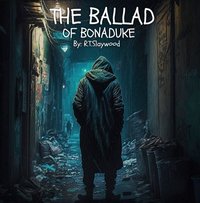
After the episode I read yesterday, I didn’t want to wait a week
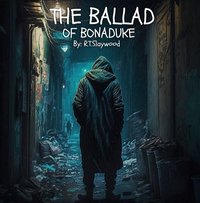 The Ballad of Bonaduke—
The Ballad of Bonaduke—DETAILS: Series: The Ballad of Bonaduke, #56 Format: Kindle Vella Story Read Date: September 20, 2024

“Got it, got it.” I said.
“So what about you Bonaduke, what do you want now that you’re up to speed?”
This time I was the one wanting to change the subject.
A drunken Michael Bonaduke decides to use a grift (with maybe some sort of magic/magic-like “help”) to win on a scratch-off lottery ticket so he has money to buy more to drink. He pulls off whatever he did, gets his money and some booze and stumbles off into the darkness to drink himself into oblivion so he can start again the next day. He’s hit by dark memories (probably what’s driving him to the drinking) of fire, pleading, and screaming. There’s going to be a price to pay for his grift, and he’s trying to be ready.
He’s abducted by some representatives of a mysterious group who subject him to a test—if he passes, everything will be explained to him (and hopefully the reader, too). He passes—and is brought somewhere for answers, or maybe training, or maybe another test. Time will tell (or things are going to get really annoying). Answers aren’t quick to come—but the mysteries and questions keep piling up.
Things get hairy and Bonaduke leaves and finds himself back in the neighborhood he started from. He takes refuge in a homeless encampment shortly before a police raid. He’s apprehended and finds himself an interrogation room and shortly escapes after using his grift (but with results he didn’t quite intend). He finds himself by a group of squatters who seem to have strapped a woman to a chair for reasons that can’t be good. He attempts to rescue her before he even realizes what he’s doing, and seems to have succeeded—well, the two of them got away from the group anyway—breathing but bruised. They make their way to a fast-food taco joint and Bonaduke really needs to refuel to keep going. He tries, but fails to get food because he keeps passing out. Thankfully, the clerk is the same guy from the liquor store and he both recognizes him and gives him first aid. The woman (Zero) wakes up and shows some abilities of her on as she helps them escape from her captors who’ve tracked her down. One thing leads to another—Zero and Bonaduke’s magics don’t mix well (at least until they understand what each other can do?), and they end up in a video-game race against the squatters in a tricked-out version of Eric (the clerk’s) car. Note, I said video-game race, not a video-game-style race. They’re actually in one. When dumped back into reality, he’s surrounded by bruised and broken bodies (of people and cars). And then he gets into a supernatural fight and survives…just.
Or maybe not. But he gets better. And then his new…friends? Acquaintances? People who keep popping up in his life?…start explaining exactly what’s going on to him while they set up a new HQ and try to teach him about his abilities (and everyone tries to understand them) while they try to fund their further work. This plan doesn’t go so well, they end up stealing a book that contains (for lack of a better word) a malignant presence (something like a demon or nasty djinn), and things have gone really poorly since then. It’s almost like they’ve been cursed.
The guys go around the room, talking about their goals/desires for the circle and why they want to lock horns with the Omnicrats. One idea seemed sort of…odd to me, but I can accept it working for this world. The other two make a lot of sense. Then they ask Bonaduke what he wants.
And we get the exchange above and it moves on from there…Bonaduke confronts them with some of his theories about what’s happened in the last few weeks. They try to respond, but he’s not buying it (I’m not sure I blame him) and then he takes a step to get some answers that seems like a bad idea. Like someone lighting a match in the control room of the Hindenburg bad.
This was interesting–even the bits that seemed strange (even for Fantasy fiction), and it helped me understand these guys so much better.
And then Bonaduke and his self-delusional, self-destructive brain took him down the path at the end of the episode and…eh. Things will be a hopping in episode 57, I bet.

![]()

After a 2 month break, I’m back to this. Hopefully, I can pick up the pace and catch back up…
 The Ballad of Bonaduke—
The Ballad of Bonaduke—DETAILS: Series: The Ballad of Bonaduke, #55 Format: Kindle Vella Story Read Date: September 19, 2024

“Out of curiosity, have either of you taken the time to explain what we’re doing?” Om asked the others.
“I’ve been busy.” Zero said
“Same.” Alan added though less convincingly.
“Honestly I’ve gotten used to it.” I said and leaned back in my recliner.
“Well I commend your patience. Ok, first let’s call the circle to order. Then we’ll go over what has happened up to this point.”
A drunken Michael Bonaduke decides to use a grift (with maybe some sort of magic/magic-like “help”) to win on a scratch-off lottery ticket so he has money to buy more to drink. He pulls off whatever he did, gets his money and some booze and stumbles off into the darkness to drink himself into oblivion so he can start again the next day. He’s hit by dark memories (probably what’s driving him to the drinking) of fire, pleading, and screaming. There’s going to be a price to pay for his grift, and he’s trying to be ready.
He’s abducted by some representatives of a mysterious group who subject him to a test—if he passes, everything will be explained to him (and hopefully the reader, too). He passes—and is brought somewhere for answers, or maybe training, or maybe another test. Time will tell (or things are going to get really annoying). Answers aren’t quick to come—but the mysteries and questions keep piling up.
Things get hairy and Bonaduke leaves and finds himself back in the neighborhood he started from. He takes refuge in a homeless encampment shortly before a police raid. He’s apprehended and finds himself an interrogation room and shortly escapes after using his grift (but with results he didn’t quite intend). He finds himself by a group of squatters who seem to have strapped a woman to a chair for reasons that can’t be good. He attempts to rescue her before he even realizes what he’s doing, and seems to have succeeded—well, the two of them got away from the group anyway—breathing but bruised. They make their way to a fast-food taco joint and Bonaduke really needs to refuel to keep going. He tries, but fails to get food because he keeps passing out. Thankfully, the clerk is the same guy from the liquor store and he both recognizes him and gives him first aid. The woman (Zero) wakes up and shows some abilities of her on as she helps them escape from her captors who’ve tracked her down. One thing leads to another—Zero and Bonaduke’s magics don’t mix well (at least until they understand what each other can do?), and they end up in a video-game race against the squatters in a tricked-out version of Eric (the clerk’s) car. Note, I said video-game race, not a video-game-style race. They’re actually in one. When dumped back into reality, he’s surrounded by bruised and broken bodies (of people and cars). And then he gets into a supernatural fight and survives…just.
Or maybe not. But he gets better. And then his new…friends? Acquaintances? People who keep popping up in his life?…start explaining exactly what’s going on to him while they set up a new HQ and try to teach him about his abilities (and everyone tries to understand them) while they try to fund their further work. This plan doesn’t go so well, they end up stealing a book that contains (for lack of a better word) a malignant presence (something like a demon or nasty djinn), and things have gone really poorly since then. It’s almost like they’ve been cursed.
So, it’s been three weeks of everyone licking their wounds from the last episode (good time for me to take a break from the series, too, it turns out). Bonaduke hasn’t had much to do to recover, but the rest have.
At the end of the three weeks, the team—well, circle—meets in order to regroup and move into the next phase. The meeting starts with the above interchange, and then…hold on to your hats, readers. The characters explain things to Bonaduke and the reader! Not in the kind of detail that I’d like—but enough. Then they start looking to the future.
With that last line of the quotation above, Om is now my favorite character in the series. No contest. Yeah, I’d have a appreciated more details, but after the drought we’ve been in since Bonaduke was taken off the streets by them, this little bit of information was enough.
I can care about the circle, I get an idea about their goals and what they’re trying to avoid. I want to see them succeed for reasons beyond “they’re who we’re spending time with.” Yes, I want more—but I’m greedy that way. I’ll take what we’ve been given.
And it’s tantalizing to think we might be getting a better idea of their goals in the next episode, too.
Beyond that, it was good to see the group take some time to recover. To slow down, and not just bounce from escapade to escapade.
All in all, one of my favorite episodes thus far.

![]()
Yup. I’m late with this. It’s not even Wednesday for many of you…it’d been a day and I needed some good no-screen time today, and thankfully my wife drug me away from them. But I’m home now, and have time to finish this off.
This meme was formerly hosted by MizB at A Daily Rhythm and revived on Taking on a World of Words—and shown to me by urore-Anne-Chehoke at Diary-of-a-black-city-girl.
The Three Ws are:
What are you currently reading?
What did you recently finish reading?
What do you think you’ll read next?
Seems easy enough, right? Let’s take a peek at this week’s answers:
I’m reading (and meant to finish yesterday) the ARC for Candle & Crow by Kevin Hearne—it might be my favorite thing in this series, I am making progress in On Classical Trinitarianism: Retrieving the Nicene Doctrine of the Triune God edited by Matthew Barrett, and I’m listening to Sleepless City by Reed Farrel Coleman, read by Peter Giles on audiobook. (Giles’ raspy, tough, Bales-as-Batman narration has had to have shredded his vocal cords, I hope he was taken care of)
I just finished Andy Weir’s Project Hail Mary and #CrimeTime by Jeneva Rose and Drew Pyne, read by: Abelardo Campuzano, Jennifer Damiano, Phil Thron, Gary Tiedemann, Peter Berkrot, P.J. Ochlan, Nancy Linari, Chris Andrew Ciulla, Piper Goodeve, Kevin R. Free and Samantha Desz on audio.
My next book should be The Debt Collector by Steven Max Russo—a book I told Russo I’d read before March 20 of this year. Ugh. My next audiobook should be An Inheritance of Magic by Benedict Jacka, read by Will Watt. I don’t know if I can handle Jacka with a different narrator (as age-appropriate as he might be compared to Gildart Jackson)
![]()
Today is turning out to be a bad day for me to post things, but I’ve been inspired by Witty & Sarcastic Bookclub’s thread on Twitter to revisit this post (and a similar one). So, why not repost it while I consider revising the list? From wayyyyyy back in 2020.

The topic for this week’s Top Ten Tuesdays is Opening Lines.
Part of what made cutting last week’s Top 5 Opening Lines down to just five was that I knew this was coming. I let myself go a little long with these, hopefully not annoyingly so. These may not be the best openings I’ve ever read, but they’re the most memorable.

![]()
Today is turning out to be a bad day for me to post things, but I’ve been inspired by Witty & Sarcastic Bookclub’s thread on Twitter to revisit this post (and a similar one). So, why not repost it while I consider revising the list? From wayyyyyy back in 2020.

I love a good opening line. A solid opening paragraph or page is great, but an opening line that sells you on the next 200-500 pages? Magic. When I saw this list topic listed, these 5 jumped to mind—they may not be the best I’ve ever read, but they’re the most memorable.
(I tried, tried, tried to limit myself to the opening line, but I failed on a couple of them, couldn’t help myself.)
 |
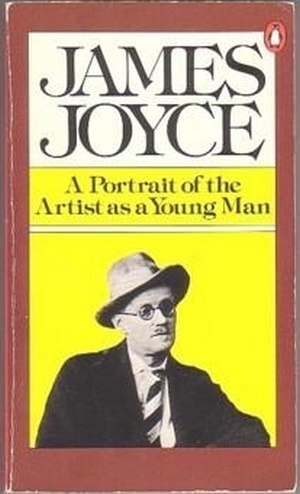 A Portrait of the Artist as a Young Man by James Joyce I remember in our English class in High School when we were assigned this book, pretty much no one was interested. When Mr. Russo passed out the paperbacks, a few of us flipped it opened and read these first words—and suddenly we were open to the idea (didn’t last long for all of us, but that’s beside the point, we’re focused on the opening lines here). It’s stuck with me for almost 30 years, that’s gotta say something.
|
 |
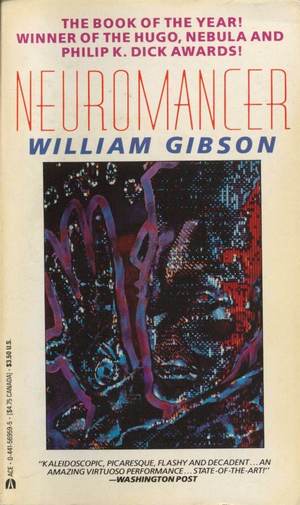 Neuromancer by William Gibson This sentence was love at first glance for me. Still love it. Naturally, no one knows what color this is referring to anymore.
|
 |
 The Big Sleep by Raymond Chandler Oft-parodied. Oft-imitated. Often-celebrated. Does it get better than this?
|
 |
 Harry Potter and the Sorceror’s Stone by J. K. Rowling Why bother saying anything here?
|
 |
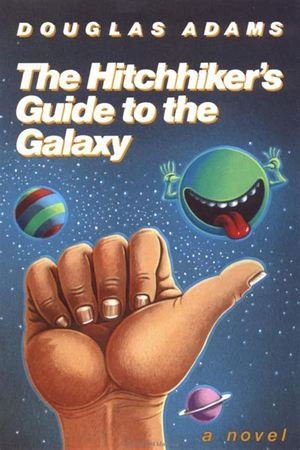 The Hitchhiker’s Guide to the Galaxy by Douglas Adams I’ll go on and on about this book next week, so I’ll just keep my trap shut here. But man…there was something about these lines that got into my blood.
|
![]()
Powered by WordPress & Theme by Anders Norén